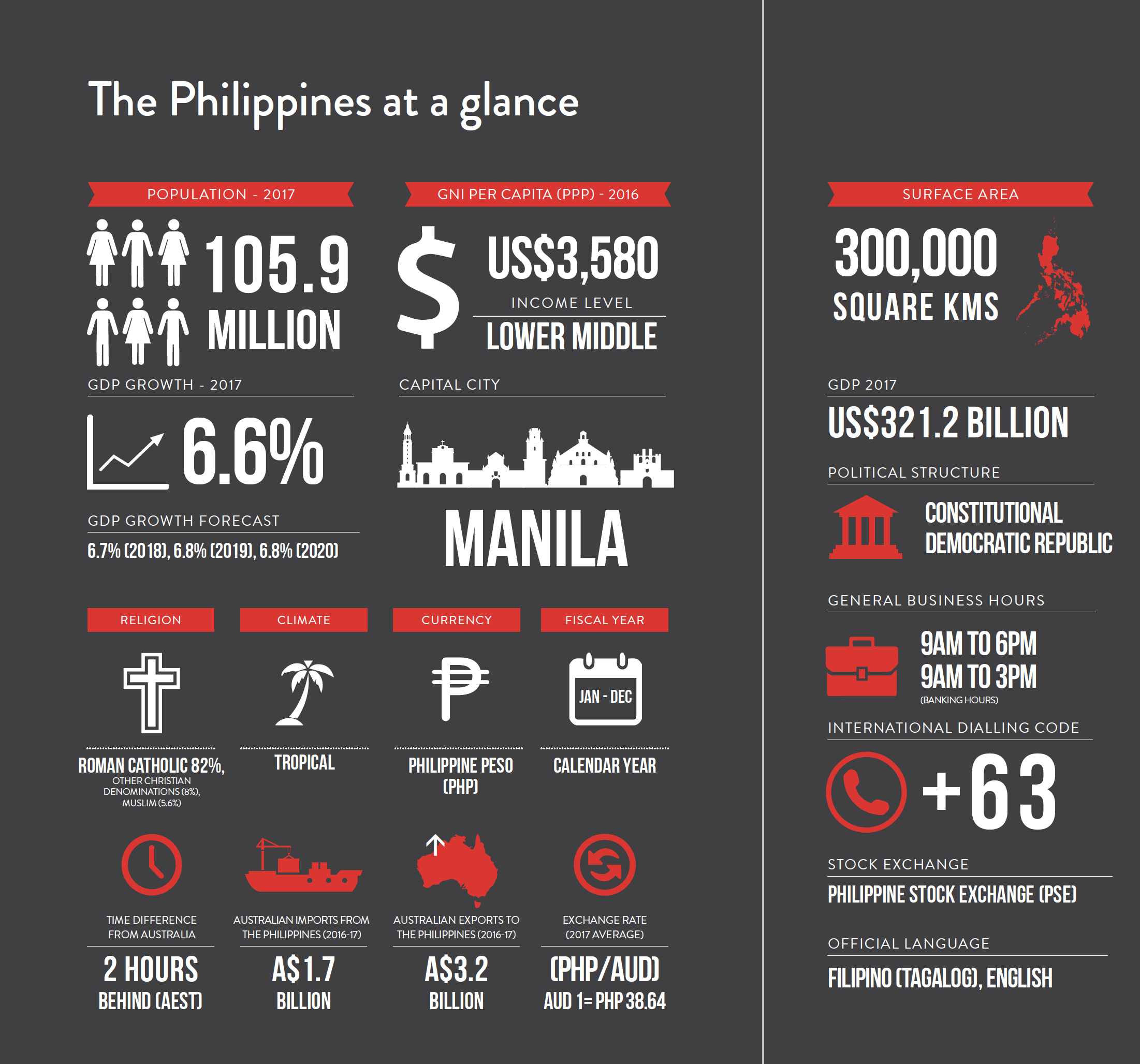Doing Business in the Philippines
In recent years the Filipino economy has rapidly expanded, growing at well above its historical average of 5.2% pa over the past decade.
In recent years the Filipino economy has rapidly expanded, growing at well above its historical average of 5.2% pa over the past decade.
In recent years the Filipino economy has rapidly expanded, growing at well above its historical average of 5.2% pa over the past decade. Despite natural disasters such as 2014's Typhoon Yolanda, the World Bank expects the economy to continue growing strongly.
The Philippines is on par with the average of its neighbours when it comes to creditworthiness, and has achieved an investment grade credit rating. But it lags slightly behind its peers in terms of business climate and growth and its per capita income is low.
The Philippines is a party to the ASEAN-Australia-New Zealand Free Trade Agreement (AANZFTA), which delivers benefits for Australian businesses in the areas of tariff reduction and elimination, economic engagement and cooperation, greater certainty for service suppliers and investors and supply chain opportunities.

The World Bank expects the economy to continue growing strongly.
In recent years the Filipino economy has rapidly expanded, growing at well above its historical average of 5.2% pa over the past decade. Despite natural disasters such as 2014's Typhoon Yolanda, the World Bank expects the economy to continue growing strongly.
The Philippines is on par with the average of its neighbours when it comes to creditworthiness, and has achieved an investment grade credit rating. But it lags slightly behind its peers in terms of business climate and growth and its per capita income is low.
The Philippines is a party to the ASEAN-Australia-New Zealand Free Trade Agreement (AANZFTA), which delivers benefits for Australian businesses in the areas of tariff reduction and elimination, economic engagement and cooperation, greater certainty for service suppliers and investors and supply chain opportunities.
Looking to develop your understanding further? Discover the Asialink Business face to face training and online courses available to you and set yourself up for success in the Asian markets.
A top-down, hierarchical management style means decision making can be slow.